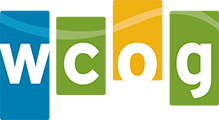The scope and perspective of regional transportation planning is different than that conducted by local governments, the state, tribes, transit providers and other entities. This section of Whatcom Mobility 2040 describes the Regionally Significant (transportation) System (RSS), including existing and future facilities, services, and programs that are of common interest and impact in the Whatcom region.
Facilities and related services
The RSS includes both publicly and privately-owned and operated components, including roads, portions of roads and other dedicated facilities for bicycle and pedestrian travel, railroads, marine terminals, transit stations and airports. Physical assets such as border inspection stations, parking lots and electric vehicle charging stations are also included in the RSS.
Roads
- Roads classified as principal or minor arterials per the U.S. Federal Highway Administration (FHWA)’s functional classification system
- All state roads
- Roads serving intermodal facilities, including:
- Amtrak stations
- Airports
- Ferry terminals
- Intercity bus terminals
- Multipurpose passenger facilities
- Port terminals
- Public transit stations
- Truck/pipeline terminals
- Truck/rail facilities
- Roads serving major activity centers
- Regional hospitals
- Large schools
- Emergency management centers
- Shopping centers
- Industrial centers
- Employment centers
- Recreation and tourism centers
- Washington State Freight and Goods Transportation System routes T-1 through T-4
- Roads that support facilities generating or attracting significant freight-truck shipments and/or deliveries (Note: Most routes between concentrations of freight trip-ends are served by roads included in the RSS by virtue of the criteria listed above. This criterion allows inclusion of some roads that do not meet the other criteria, but because of the type and/or volume of traffic they serve, they advance regional transportation goals.)
Figure 2: Regionally Significant Roads
Bicycle and pedestrian
-
-
- Bicycle routes and bike/pedestrian facilities (trails, etc.) serving regional connections or intermodal facilities. Examples of regional bike/pedestrian routes include:
- The Bay-to-Baker Trail route
- The Coast Millennium Trail route
- The Nooksack Loop
- Regional sections of the U.S. Bicycle Route System
- Bike/pedestrian facilities that serve RSS intermodal facilities, including:
- Dedicated trail serving a park-and-ride/transit hub
- Bike-share station co-located with a transit hub
- Bike-share services
- Bicycle routes and bike/pedestrian facilities (trails, etc.) serving regional connections or intermodal facilities. Examples of regional bike/pedestrian routes include:
-
Rail
-
-
- Railroads (tracks and related facilities)
- Passenger rail stations
- Freight-rail carrier services
-
Marine
-
-
- Alaska Marine Highway System
- Public ferry boats and auto and passenger ferry terminals
- Marine cargo terminals and services
-
Transit
-
-
- Public transit routes, services, built amenities (pullouts, shelters, etc.)
- WTA (and partners on inter-county services)
- Lummi Transit
- Private scheduled-route operators (Greyhound, Bolt Bus, Bellair, Airporter, Quik Shuttle, etc.)
- Amtrak Cascades inter-city rail service
- School district buses
- Bus stations (WTA and private scheduled-route operators)
- Public transit routes, services, built amenities (pullouts, shelters, etc.)
-
Air
-
-
- Bellingham International Airport
- Lynden Airport
- Passenger airlines (Alaska, Allegiant, Horizon, San Juan, others)
- Air freight carriers (Alaska Air Cargo, FedEx)
-
Other facilities
-
-
- Intermodal
- U.S. and Canadian federal border inspection stations
- Passenger vehicle parking facilities located at:
- Employment centers
- Institutional uses (schools, hospitals, etc.)
- Retail and service providers
- Intermodal (rail, ferry, transit, park-and-rides, etc.)
- Park-and-ride lots
- Truck parking facilities (public and private facilities where large freight trucks can park for legally-required driver rest periods)
- Electric vehicle charging stations
-
Other services
-
-
- Ride services (taxis, Lyft, Uber, etc.)
- Car share services (ZipCar, peer-to-peer, etc.)
- Vehicle rental
-
Programs
-
- Safety, including Washington State’s Target Zero program
- Whatcom Unified Emergency Management
- Transportation demand management, particularly the Whatcom Smart Trips Program
- Washington State’s Commute Trip Reduction Program
- Transportation system management and operational programs and strategies, including intelligent transportation systems
- Transportation system planning
- Metropolitan and regional transportation planning, as described in WCOG’s Unified Planning Work Program
- The International Mobility and Trade Corridor Program (IMTC)
- North Sound Connecting Communities Program (also known as “The Farmhouse Gang”)
